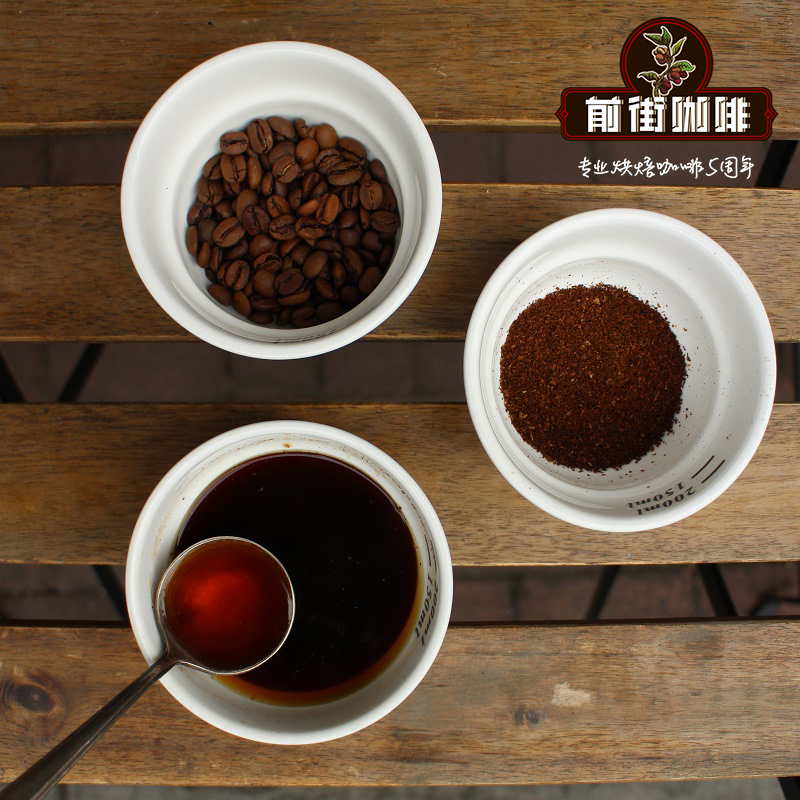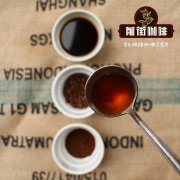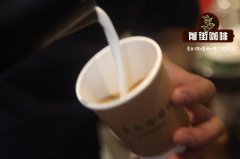Characteristics of Cadura / Kaddura Coffee beans where is Kaddura / Cadura coffee?

Professional coffee knowledge exchange more coffee bean information please follow the coffee workshop (Wechat official account cafe_style)
Coffee belongs to the evergreen shrub of the genus Coffea of Rubiaceae. There are about 125 species in the subgenus Coffeae (25 in Africa and 55 in Madagascar, Masklin and Comoros) and 7 species in the subgenus Baracoffeae.
, there are only three kinds of coffee of commercial value
Arabica species (Coffea Arabica), Robusta species (Coffea canephora also known as Coffea Robusta) and Laibuka species (Coffea Liberica), these three varieties are called "three native species of coffee".
Arabica species account for about 70% of the world's total production, and boutique coffee is in great demand.
Robusta species account for 27%, which is mainly used in instant and canned coffee. The content of caffeine is twice that of Elaraby species.
Liberian species are only traded in Suriname, Libya, C ô te d'Ivoire and other countries in West Africa because they are not resistant to leaf rust and have a poor flavor, but are not popular all over the world.
If the variety of coffee is divided by biology, it can be divided into Arabica, Robusta and Liberica. The main drinking varieties in the world are Arabica and Robusta. Lieberica is often overlooked because of its low yield or poor quality.
Generally speaking, Arabica is mainly used in single or boutique coffee, while Robusta is used to make instant coffee. Although Arabica can be defined as high-end coffee and Robusta as secondary, it does not have to be classified in this way, and it is more appropriate to distinguish it according to its own favorite taste. In terms of taste, the United States and Japan drink light coffee made from Arabica more often, while Europe prefers Italian concentrate made from a mixture of Arabica and Robusta.
[Caturra] Kaddura belongs to Arabica.
Red Bourbon, a single gene natural mutation dwarf and green-top variety, planted 5000 Meltel plants per hectare without shade, small and medium-sized beans, and higher yield than Bourbon. It was first discovered in Brazil in 1937 and was commercially grown in Minas Gerais, Brazil in 1937. In Central America, Colombia, Costa Rica and Nicaragua performed best. 1500-1700 meters above sea level can produce the best quality and quantity.
Kaddura is characterized by bright acidity and low to medium consistency. It has less clarity and sweetness than its parent bourbon, with lemon or citrus acidity on the palate, and less sweetness than Typica and Bourbon in sweetness, because Kaddura's sweetness depends on the number and dose of fertilizer applied by the grower, and has high production capacity, but continuous fertilization and pruning is necessary to maintain production capacity, so the tree is short and multi-branched and compact. The micro-jagged green leaves are relatively wide, and although the production capacity is increased, the yield is still limited because the harvest period takes 2 years and the care cost is high, and it is extremely vulnerable to leaf rust, berry disease and nematodes.
Caturra will have citric acid and mild sweetness.
Kaddura is a single gene variant of bourbon discovered in Brazil in the 1950s. It has better yield and disease resistance than bourbon, and the tree is shorter and easy to harvest. Unfortunately, it encounters the same problem as bourbon-as a result, it takes a year off for a year, and its flavor is equal to or slightly worse than bourbon beans.
But it is more adaptable, can be planted with high density, does not need shade trees, and can be vibrant in direct exposure to the sun, so it is also called "exposed coffee" (Sun Coffee).
Kaddura is suitable for high altitude areas from 700m to 1700 m, but the higher the altitude is, the better the flavor is, and the bean yield is relatively reduced. There are also variants of yellow Kaddura in Central and South America, but the wind rating is not as good as Huang bourbon.
There are several kinds of coffee containing Kaddura in the front street coffee shop.
Qianjie coffee brewing suggestion:
V60ap90 ℃ / 1 15 / time two minutes
Important Notice :
前街咖啡 FrontStreet Coffee has moved to new addredd:
FrontStreet Coffee Address: 315,Donghua East Road,GuangZhou
Tel:020 38364473
- Prev

The taste of Cadura / Kaddura Coffee beans how should I drink Cadura coffee beans?
For more information on coffee beans, please follow the coffee workshop (official Wechat account cafe_style) generally speaking, Arabica is mainly used in specialty or boutique coffee, while Robsta is used to make instant coffee. Although Arabica can be defined as high-end coffee and Robusta as secondary, it doesn't have to be classified in this way, according to your favorite taste.
- Next

How to buy household coffee beans _ price of household coffee beans _ which brand of household coffee beans is better
Professional coffee knowledge exchange more coffee bean information Please follow the coffee workshop (Wechat official account cafe_style) Xiaobai wants to try to make his own coffee at home, but does not know anything about coffee beans, how to choose a trusted coffee shop to buy his favorite household coffee beans? The first step is to chat with the coffee shop owner and tell him what kind of mouth he usually prefers.
Related
- Beginners will see the "Coffee pull flower" guide!
- What is the difference between ice blog purified milk and ordinary milk coffee?
- Why is the Philippines the largest producer of crops in Liberia?
- For coffee extraction, should the fine powder be retained?
- How does extracted espresso fill pressed powder? How much strength does it take to press the powder?
- How to make jasmine cold extract coffee? Is the jasmine + latte good?
- Will this little toy really make the coffee taste better? How does Lily Drip affect coffee extraction?
- Will the action of slapping the filter cup also affect coffee extraction?
- What's the difference between powder-to-water ratio and powder-to-liquid ratio?
- What is the Ethiopian local species? What does it have to do with Heirloom native species?

